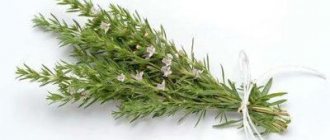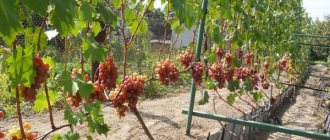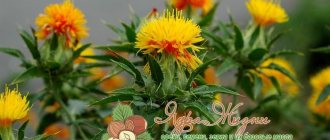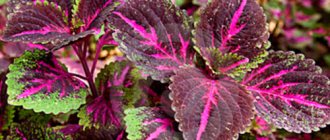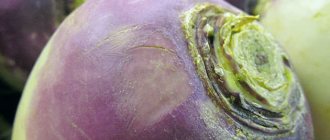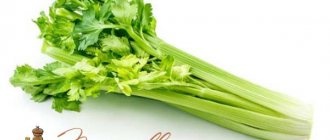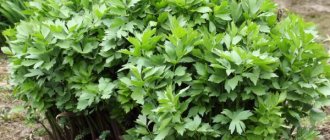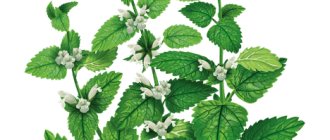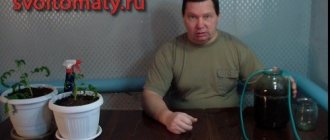Ruta: description
Ruta is a perennial herbaceous plant or evergreen subshrub with a rather peculiar odor. In the wild, it is distributed from the Canary Islands to the Mediterranean Sea. In Russia, the plant is grown exclusively in people's gardens and vegetable gardens. It is extremely rare to find it growing wild.
It is also cultivated in America, Western Europe, Asia and even Africa. In general, this plant has been known for many centuries. Even the ancient Greeks used it to treat many diseases. The most common is considered to be fragrant or fragrant rue.
Contraindications
The product must be used very carefully. Before starting therapy, you should definitely consult a doctor who will select the dosage and duration of the course. The herbalist will also determine compatibility with other drugs, existing diseases and therapeutic procedures.
If the substance is used in excess, there is a risk of irritation of the intestinal mucosa. Nausea and vomiting also often occur. There is a risk of increased urination.
Key contraindications to the use of the substance include the following:
- pregnancy and lactation;
- age less than 16 years;
- individual sensitivity to ingredients;
- hypotension;
- gastritis, colitis, peptic ulcer;
- uterine bleeding.
You should not drink plant-based products during menstruation.
Rut oil should not be used for inhalation if you develop arterial hypertension or bronchial asthma. It is also not used after a stroke.
If unpleasant signs appear, you should stop using the product and consult a doctor.
Useful properties of the culture
The herb is known to have a high content of essential oils and alkaloids. Rue, and especially fragrant rue (Ruta graveolens), is widely used in both traditional and folk medicine.
The plant is effective for:
- stomach cramps;
- cholelithiasis;
- atherosclerosis;
- vitamin deficiency;
- impotence;
- allergies;
- worms;
- increased heart rate;
- flatulence;
- stomach colic;
- cough and runny nose;
- neurosis and hysteria;
- paralysis and osteochondrosis;
- scabies;
- rickets or rheumatism.
In addition, rue has the following properties:
- anti-inflammatory;
- restorative;
- soothing (for bruises, bites, wounds, abscesses);
- refreshing (used for rinsing the mouth);
- antiseptic.
However, despite its wide pharmacological use, it should be remembered that in large doses, rue is poisonous! Therefore, it should be used very carefully and at the slightest symptoms of an overdose (gastrointestinal upset, swollen tongue, bradycardia when used internally or burns when used externally), you should consult a doctor.
You can also learn about the beneficial properties of chokeberry.
Use at home
An infusion of leaves is prepared from 1 teaspoon of crushed raw materials, which is poured with 1 glass of boiling water, left for 2 hours, and filtered. Take 50 ml 3 times a day.
To prepare a cold herbal infusion , pour 1 teaspoon of crushed raw material into 2 cups of cold boiled water, leave for 8 hours, strain. Take 1/2 cup 4 times a day before meals.
The tincture is most convenient to use and, using it, it is easier to maintain the exact dosage. It is prepared with vodka in a ratio of 1:5. Leave for 10 days in a dark place, strain. Take 10 drops in 1 tablespoon of water 3 times a day.
Rue preparations are contraindicated during pregnancy, hypotension, hyperacid gastritis, gastric and duodenal ulcers. In case of an overdose, irritation of the mucous membrane of the digestive tract, swelling of the tongue and larynx, fainting, vomiting, diarrhea, convulsions, general weakness, kidney and liver damage may occur. External use of rue sometimes causes skin burns.
And in order not to make a mistake with the dose and not to forget about contraindications, you can take homeopathic preparations of rue, which are prescribed for bruises, sprains, spasms, rheumatism, and excess tension.
How to plant rue correctly
Cultivating rue yourself is not that difficult. Growing and caring for them will not take much effort. This plant loves light and tolerates drought calmly. Any soil is also suitable for it, but carbonate, loamy, calcareous or crushed stone is preferable.
Landing can be done in two ways:
- immediately in open ground;
- grow seedlings and then transplant into the ground.
If you plant crops in open ground, remember:
- It is advisable to plant in early spring, although it is possible before winter;
- Planted seeds must be thinned twice at monthly intervals.
With this method, seedlings will appear in about two weeks.
If you first decide to grow seedlings, then remember that you need to transplant the seedlings into open ground in the second half of May.
Name
About 15 species of perennial plants belong to the genus Ruta, and even more plants belong to the Ruta family. This family includes citrus fruits (orange, lemon, kumquat), Yasenets flower, Fagara plant (iron tree). Among the rue family there are herbs, shrubs and subshrubs, united by a common feature - a rather strong aroma emanating from the leaves and shoots. Plants are known for their medicinal properties, in particular, their ability to remove poisons from the body.
In our country, gardeners most often grow fragrant rue as a spicy and medicinal crop. Less known is Monarda (Bergamot) - a spicy and ornamental herb that produces wonderful tea. Blooming monarda decorates the area from mid-summer to late autumn with bright inflorescences. Another name is Chervona rue, the plant received it for the bright red hue of its flowers.
Monarda
Features of reproduction
In addition to seedlings and planting seeds, the plant also propagates by cuttings or division.
When taking cuttings, you must remember that:
- First you need to place the cuttings in a container of water;
- As soon as the cutting gives roots, it can be planted in a pot of soil or directly into the ground. But it is best to do this in August-September.
Growing rue, features of flower care
Ruta does not need close attention. Just give it enough sunlight and don't over-moisten the soil - that's all the basic needs of a southern flower. The plant needs replanting very rarely (sometimes this happens once every ten years), but protection from drafts must be constant.
The plant is rarely attacked by diseases and pests, and its main enemy is weeds. Do not forget to weed the fragrant rue in time and loosen the soil in the area where it grows. It is also worth considering the fact that although the plant is accustomed to our winters, it is best to cover it during cold weather.
Important! Do not touch the flower with your bare hands. This will cause blisters and itching, while oversaturation with juice or oil can lead to a decrease in pulse, an increase in temperature and even loss of consciousness.
How to water rue
Rue is a fairly drought-resistant flower, so it only needs watering on particularly hot days. Any waterlogging of the soil can lead to disease and partial death of the plant. Spraying the flower will also be an unnecessary step.
Features of plant feeding
After winter, you can trim dead branches and fertilize the rue with a weak nitrogen fertilizer, although in general, the plant does not need any special fertilizer. You can feed it only once a year, using complex formulations for this.
Rue pruning
Ruta responds very well to pruning. After the cold weather has passed and you have freed the plant from its winter shelter, you need to trim off the dead shoots right up to the bud. You can also remove weak and old shoots.
If the plant is very neglected, deep pruning will have a beneficial effect on it, in which only 15–20 cm of branches are left from the root. In addition, by pruning, you can make the plant even more decorative and highlight its compact crown.
Using root
The leaves are most often used for medicinal purposes. They can be used in the following forms:
- brew like tea;
- make an infusion;
- make an ointment;
- use as part of collection;
- use twigs to repel insects (including mosquitoes);
- drink juice internally (especially for snake bites);
- fresh leaves can be applied to the bruised area.
Some people eat rue leaves as a spice; they are also added when canning cucumbers and tomatoes.
Medicinal raw materials
For medicinal purposes, fresh or dried herbs collected during the flowering period are used. Dry the raw materials under a canopy or in a well-ventilated area.
Chemical composition
Active ingredients
The leaves and apical shoots contain: essential oil (up to 0.5%), which contains nonanone, linalool, undecanone, undecanol, rutin, furocoumarins (bergalten, xanthotoxin, pangelin, psoralen, daphnoretin) (up to 1%), resins , alkaloids (rutamine, graveolin, dictamnin), malic acid.
What else you need to know about the plant
If you are going to use rue for medicinal purposes, be sure to note that this herb should not be used for:
- pregnancy;
- gastritis;
- ulcer;
- hypotension.
In addition, a few words about how to properly collect and prepare plant materials:
- You need to collect grass during flowering;
- shoots must be carefully cut with scissors, and not torn off or broken off;
- do not forget to wear rubber gloves, as rue juice can burn the skin and even cause allergies;
- dry the plant in a well-ventilated area, not in the sun;
- dried raw materials are stored for up to 1 year.
Undoubtedly, another advantage of rue is its decorative value. This plant will delight you with its bright sunlight and will look great in a complex composition of flower plants and shrubs, and in a rock garden, as it goes well with stones.
Other uses
Rue can be used as an insect repellent, and its aroma is repellent to dogs and cats. Plant rue directly where insects are a problem, or use the dried leaves to control moths in closets. The leaves can be collected at any time for use as an insect repellent or dried for later use. It is sometimes used to flavor soap and culinary seasonings.
Because of the insects that are repelled by the aroma, the plant can be planted next to roses or raspberries, but it is better not to be planted with basil.
Author: Andrey Candidate of Sciences in Forestry. Author of 3 patents on the care and cultivation of plants at home. Author of more than 30 scientific articles in popular research journals. Just a nature lover.
